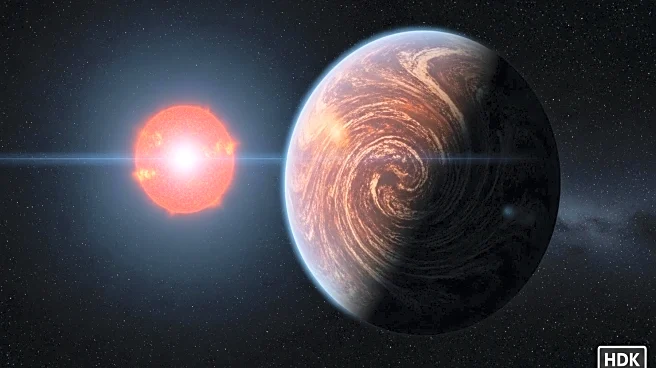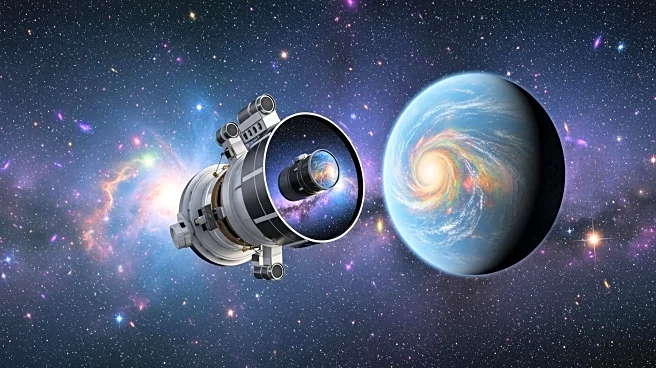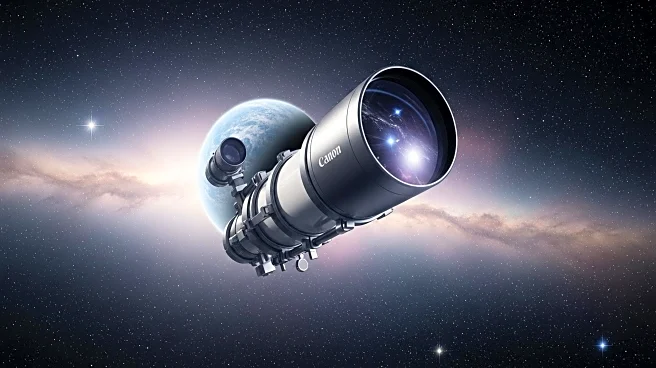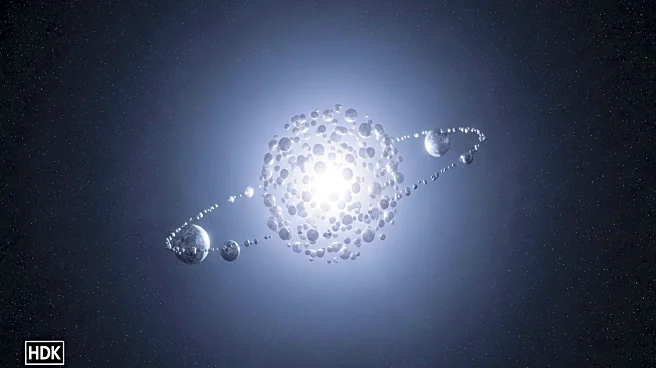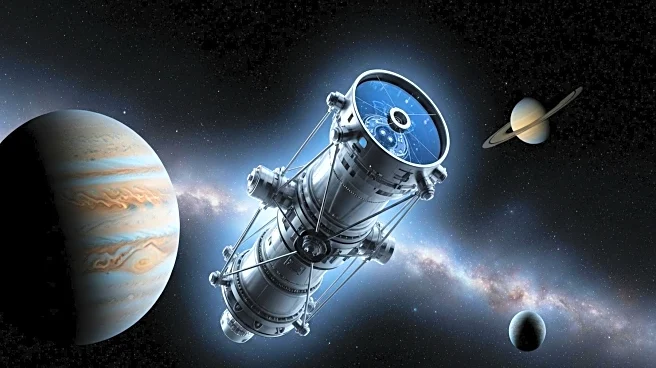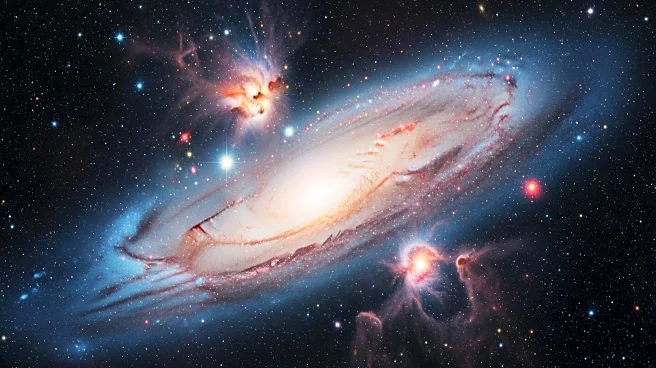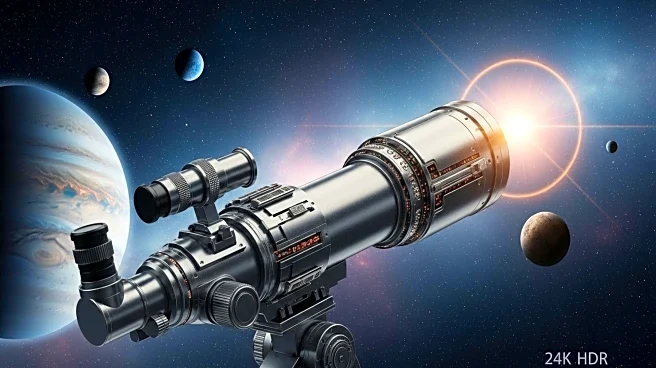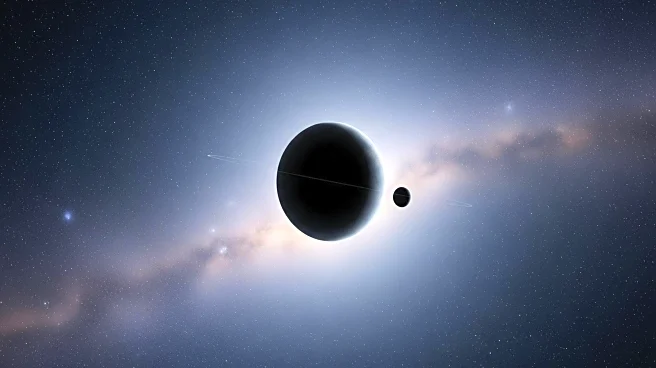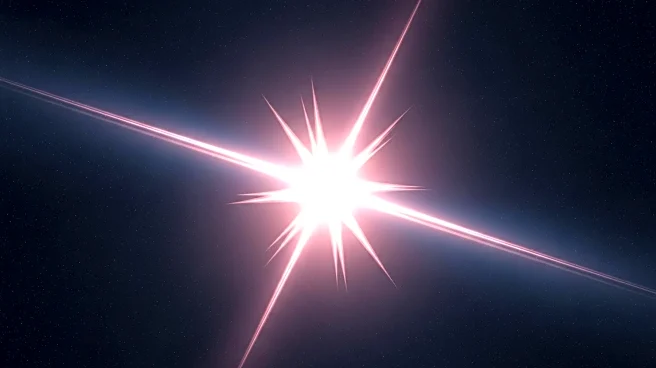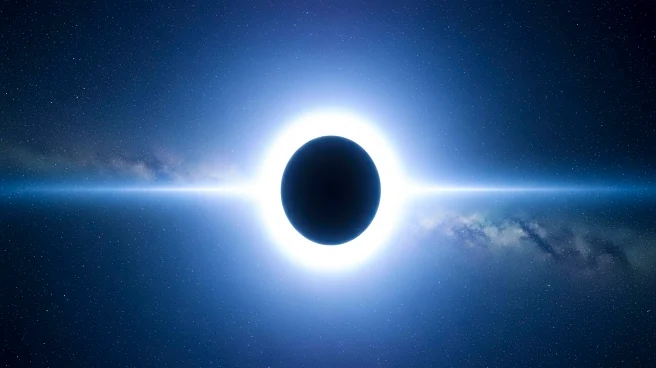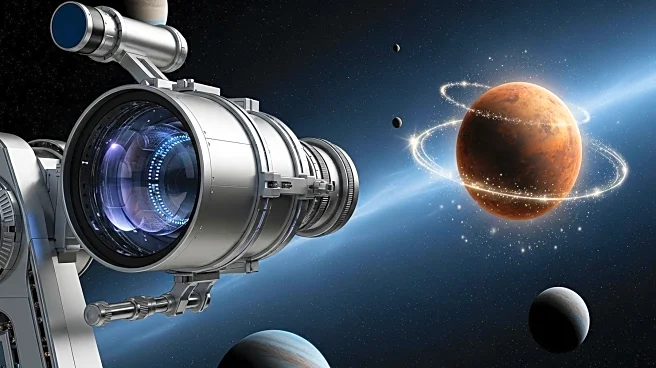What's Happening?
The James Webb Space Telescope (JWST) has discovered an exoplanet, PSR J2322-2650b, with an atmosphere composed almost entirely of elemental carbon. This planet orbits a 'black widow' pulsar, PSR J2322-2650, which is known for stealing material from a neighboring star. The exoplanet is Jupiter-sized and its atmosphere is unlike any other known 'black widow' companion, consisting mainly of tricarbon (C3) or dicarbon (C2). This discovery challenges existing models of planet formation, as the carbon-rich atmosphere should have been stripped away by the pulsar's radiation.
Why It's Important?
The discovery of a carbon-rich atmosphere on PSR J2322-2650b presents a significant challenge to current scientific understanding of planet formation, particularly in 'black widow' systems. This finding could lead to new theories about the processes that create such unique atmospheres and the conditions under which they form. The presence of a carbon-dominated atmosphere also raises questions about the potential for similar planets elsewhere in the universe, which could have implications for the study of exoplanets and the search for life beyond Earth.
What's Next?
Scientists will need to revisit existing models of planet formation to account for the unique characteristics of PSR J2322-2650b's atmosphere. Further observations and studies using JWST and other telescopes will be necessary to understand the processes that lead to such carbon-rich atmospheres. This research could provide new insights into the formation and evolution of exoplanets, particularly those in extreme environments like 'black widow' systems.
